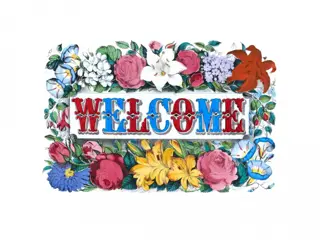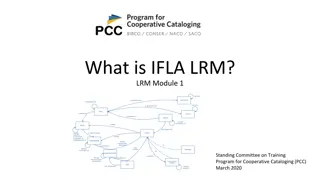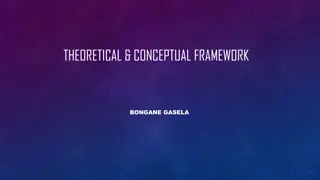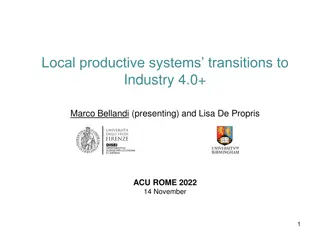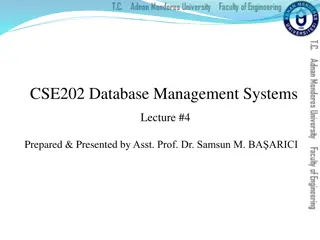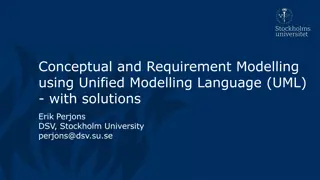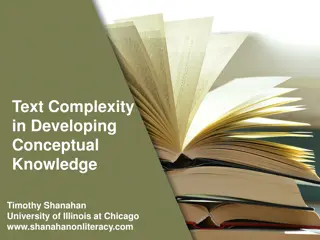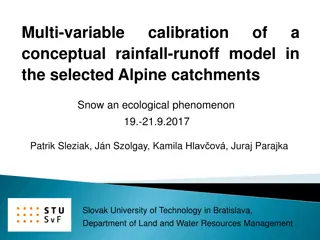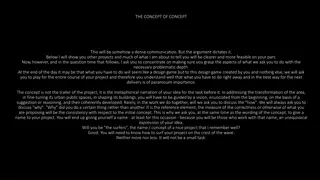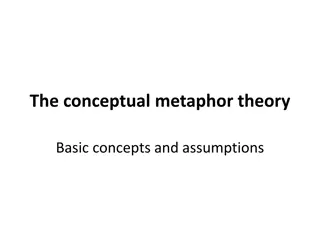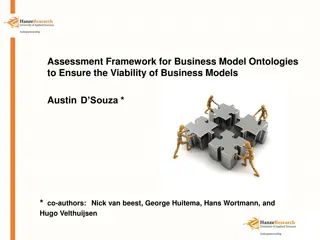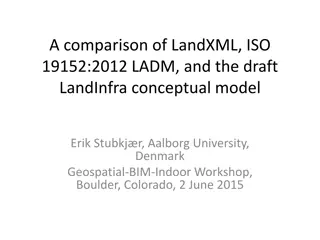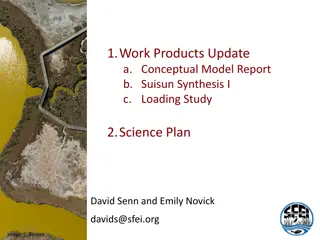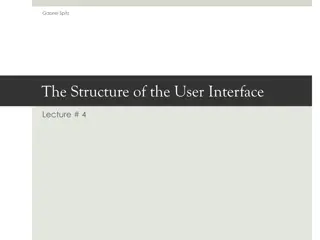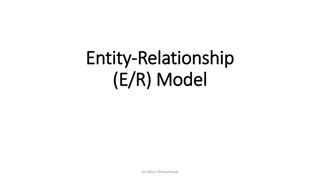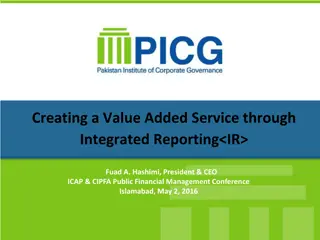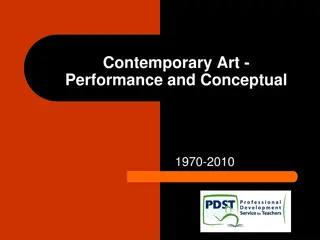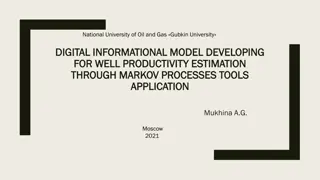Developing a Conceptual Business Model
A conceptual business model focuses on capabilities, summarizing strategic aspirations of an investment proposal within an enterprise ecosystem. It serves as a scoping diagram, outlining key players, business activities, channels, and core service flows. This tool aids in shaping investments, framing business requirements, and designing conceptual solutions. Executives, project managers, and business analysts use it for decision-making, structuring requirements, and validating solution options.
Download Presentation

Please find below an Image/Link to download the presentation.
The content on the website is provided AS IS for your information and personal use only. It may not be sold, licensed, or shared on other websites without obtaining consent from the author.If you encounter any issues during the download, it is possible that the publisher has removed the file from their server.
You are allowed to download the files provided on this website for personal or commercial use, subject to the condition that they are used lawfully. All files are the property of their respective owners.
The content on the website is provided AS IS for your information and personal use only. It may not be sold, licensed, or shared on other websites without obtaining consent from the author.
E N D
Presentation Transcript
Conceptual Business Model Is centered on capabilities, summarizes the strategic aspirations of the investment proposal and positions it within a broader enterprise ecosystem. By developing a conceptual business model and having the client review and approve it, you will ensure that you understand the proposal and properly describe it using enterprise building blocks. The CBM can then be used to make connections to other areas and initiatives that might be overlapping with this one.
The Conceptual Business Model in a nutshell When? Initial draft produced in Stage 1, as part of the Concept case review; revised & finalized early Stage 2 based on Gate 1 decisions and inserted into the Business Case Not systematically produced for every projects only when the scope and/or business complexity and/or enterprise potential justify it Why? The CBM is a scoping diagram that provides a simple, at a glance representation of the business components and features in scope of the project A tool to help shape the business investment (Stage 1) and frame the business requirements, Option Analysis and Conceptual Solution Design (Stage 2) What? A 1-page visual answering those key questions: Who are the key players/stakeholders involved in the scenario? What are the main business activities / capabilities in scope? (Stage 1) What are the channels involved? (Stage 2) What is/are the core service/functional flow(s) and information concepts? (Stage 2) Who? Consumed by: Executives to support early decision-making or to provide quick information and insight on the project Project manager and team - to help frame and structure the high-level business requirement document Business Analyst (from the Program and IMSD) to help prioritize business requirements and validate potential solution options How? (approach notes and principles) What s out of scope is as important as what s in scope Keep it simple and high-level Minimal or no reference to IT
EXAMPLE TEMPLATE The intention of this project is to data into . location. Problem/Opportunity statement (1-2 lines max), benefit statement (1 line max). EXAMPLE TEMPLATE Project Title - Conceptual Business Model (Stage 1) BUSINESS CAPABILITIES OUTPUTS STAKEHOLDERS 7.0 Information & Data Management Measurable Benefit #1 Internal Stakeholders 7.1. Information Life Cycle Management, especially: Capability Display Example 7.1.2. Information Collection, Creation, Receipt, and Capture 7.1.4. Information Use and Dissemination 7.1.3. Information Organization 7.1.5 Information Maintenance, Protection and Preservation Measurable Benefit #2 Stakeholder A Stakeholder B Stakeholder C BUSINESS FUNCTIONS (Application Needs) Measurable Benefit #3 Data Storage, Preservation & Protection Data Collection and Capture Data Integration and Exchange Data Analytics Reporting, Visualization & Publishing External Stakeholders Business Function Display Example Repository Management Data Harvesting / Ingestion / Scraping Extract, Transformation and Load (ETL) File Transfer OUTCOMES Stakeholder A Stakeholder B Expected Outcome #1 Stakeholder C ENTERPRISE OPPORTUNITIES Examples: - Opportunity to leverage Microsoft Azure Platform and new technologies (i.e. Azure Cloud technologies (Azure Data Lake Storage, Azure Data Factory, Azure Databricks, Azure SQL) for data storage, processing, and database storage ) - Opportunity to leverage the PowerBI platform for data visualization and dissemination; - Opportunity to leverage access for external parties into consuming the reporting platform (Data Portal), through a secure authentication and authorization mechanism in AAD and Power BI. Could be leveraging PowerApps for the Portal and related workflow automation Expected Outcome #2 Expected Outcome #3 Notes: 1. 2. A B Document title version/Gcdocs# Last modified Date
EXAMPLE TEMPLATE The intention of this project is to data into . location. Problem/Opportunity statement (1-2 lines max), benefit statement (1 line max). EXAMPLE TEMPLATE Project Title - Conceptual Business Model (Stage 2) CORE BUSINESS PROCESSES AND CAPABILITIES CHANNELS Example: via standardized spreadsheets and a secure file drop Responsible teams Receive, collect, scrape data Analyze and report Extract, Transform, Load Host and access (int. & ext.) Publish Departments/ Organization(s) Which stakeholders? Example: Though a secure web form interface 7.1.2. Information Collection, Creation, Receipt, and Capture 7.1.3. Information Organization Capability Display Example 7.1.4. Information Use and Dissemination Insert Symbol 7.1.5 Information Maintenance, Protection and Preservation Example: Scraping Internet and/or other sources of gathering or displaying data [Organization] MASTER BUSINESS ENTITIES [Organization] [Location] BUSINESS FUNCTIONS (Application Needs) Data Analytics Reporting, Visualization & Publishing Authentication & Authorization Data Storage, Preservation & Protection Data Harvesting / Ingestion / Scraping Extract, Transformation and Load (ETL) File Transfer Business Function Display Example Excel templates SQL Server PostgreSQL? PowerBI PowerApps? Azure AAD Enterprise solutions and standards in scope: Liquid File Azure Data Factory Azure Databricks Azure Data Lake Storage Azure SQL Additional proposed solutions: Document title version/Gcdocs# Last modified Date


